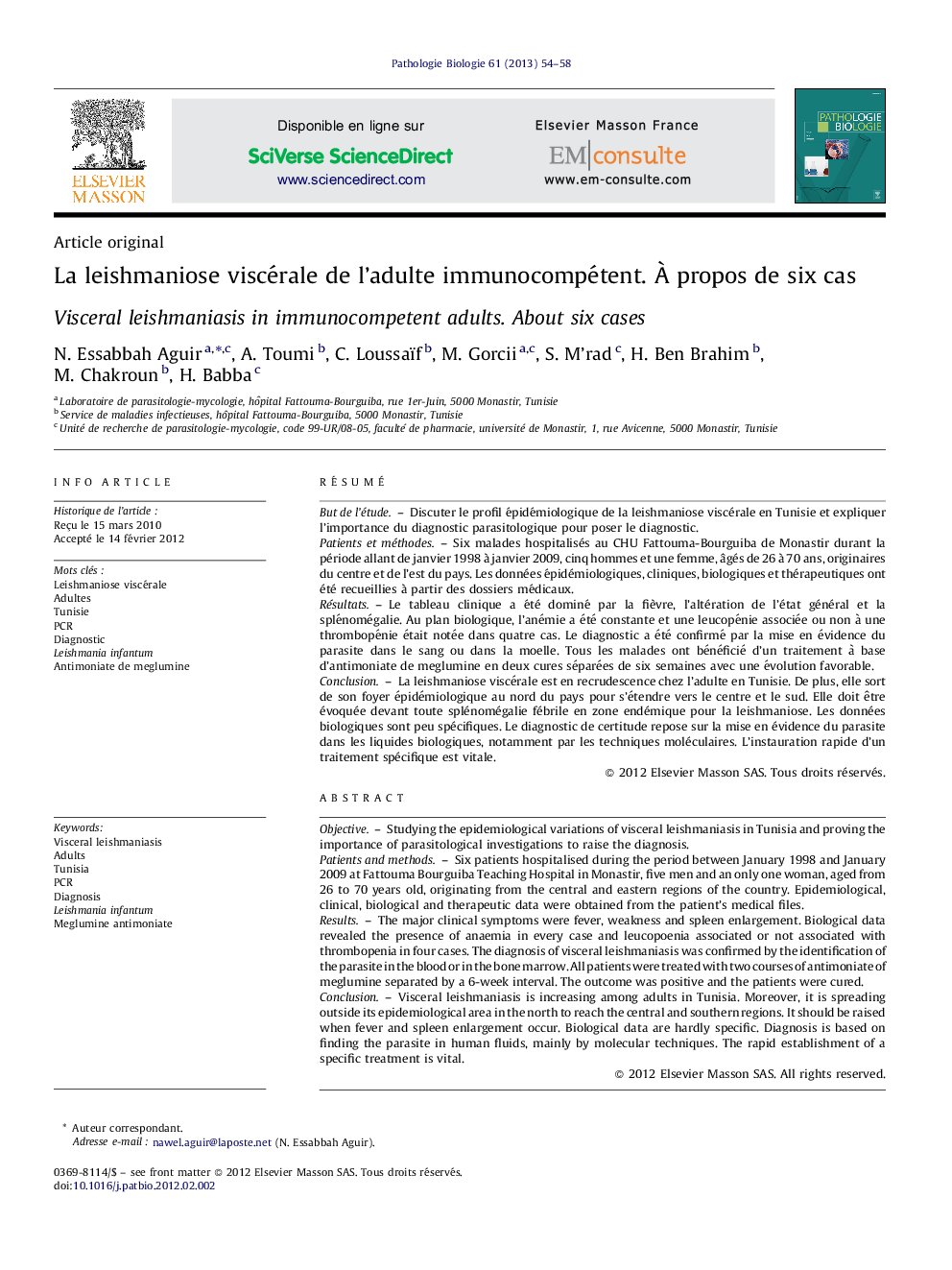| Article ID | Journal | Published Year | Pages | File Type |
|---|---|---|---|---|
| 4136051 | Pathologie Biologie | 2013 | 5 Pages |
RésuméBut de l’étudeDiscuter le profil épidémiologique de la leishmaniose viscérale en Tunisie et expliquer l’importance du diagnostic parasitologique pour poser le diagnostic.Patients et méthodesSix malades hospitalisés au CHU Fattouma-Bourguiba de Monastir durant la période allant de janvier 1998 à janvier 2009, cinq hommes et une femme, âgés de 26 à 70 ans, originaires du centre et de l’est du pays. Les données épidémiologiques, cliniques, biologiques et thérapeutiques ont été recueillies à partir des dossiers médicaux.RésultatsLe tableau clinique a été dominé par la fièvre, l’altération de l’état général et la splénomégalie. Au plan biologique, l’anémie a été constante et une leucopénie associée ou non à une thrombopénie était notée dans quatre cas. Le diagnostic a été confirmé par la mise en évidence du parasite dans le sang ou dans la moelle. Tous les malades ont bénéficié d’un traitement à base d’antimoniate de meglumine en deux cures séparées de six semaines avec une évolution favorable.ConclusionLa leishmaniose viscérale est en recrudescence chez l’adulte en Tunisie. De plus, elle sort de son foyer épidémiologique au nord du pays pour s’étendre vers le centre et le sud. Elle doit être évoquée devant toute splénomégalie fébrile en zone endémique pour la leishmaniose. Les données biologiques sont peu spécifiques. Le diagnostic de certitude repose sur la mise en évidence du parasite dans les liquides biologiques, notamment par les techniques moléculaires. L’instauration rapide d’un traitement spécifique est vitale.
ObjectiveStudying the epidemiological variations of visceral leishmaniasis in Tunisia and proving the importance of parasitological investigations to raise the diagnosis.Patients and methodsSix patients hospitalised during the period between January 1998 and January 2009 at Fattouma Bourguiba Teaching Hospital in Monastir, five men and an only one woman, aged from 26 to 70 years old, originating from the central and eastern regions of the country. Epidemiological, clinical, biological and therapeutic data were obtained from the patient's medical files.ResultsThe major clinical symptoms were fever, weakness and spleen enlargement. Biological data revealed the presence of anaemia in every case and leucopoenia associated or not associated with thrombopenia in four cases. The diagnosis of visceral leishmaniasis was confirmed by the identification of the parasite in the blood or in the bone marrow. All patients were treated with two courses of antimoniate of meglumine separated by a 6-week interval. The outcome was positive and the patients were cured.ConclusionVisceral leishmaniasis is increasing among adults in Tunisia. Moreover, it is spreading outside its epidemiological area in the north to reach the central and southern regions. It should be raised when fever and spleen enlargement occur. Biological data are hardly specific. Diagnosis is based on finding the parasite in human fluids, mainly by molecular techniques. The rapid establishment of a specific treatment is vital.
